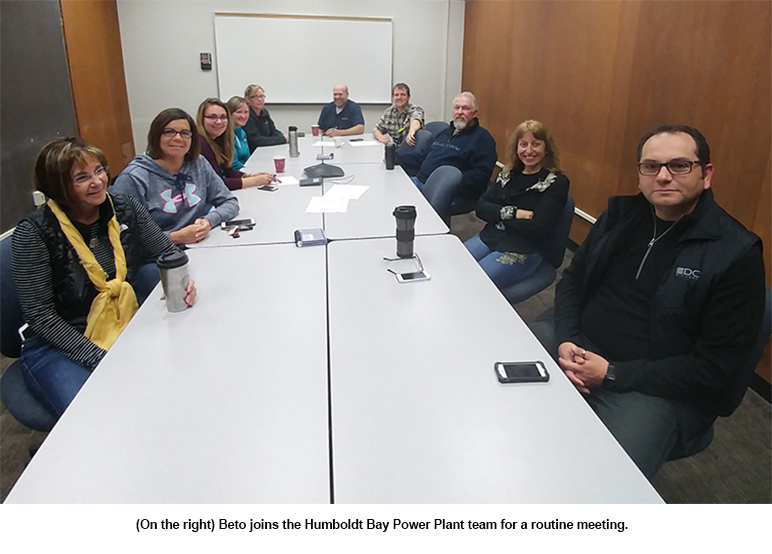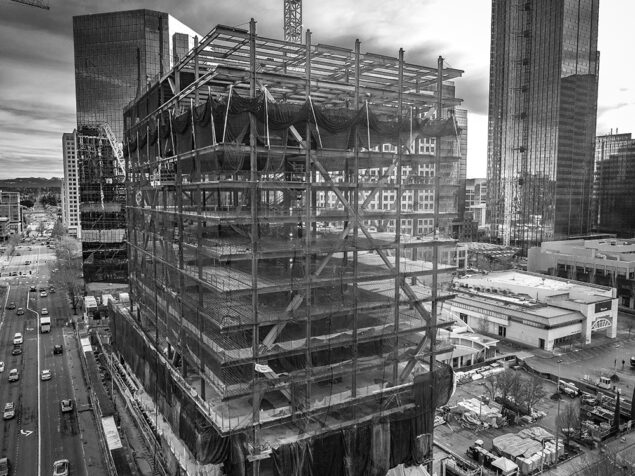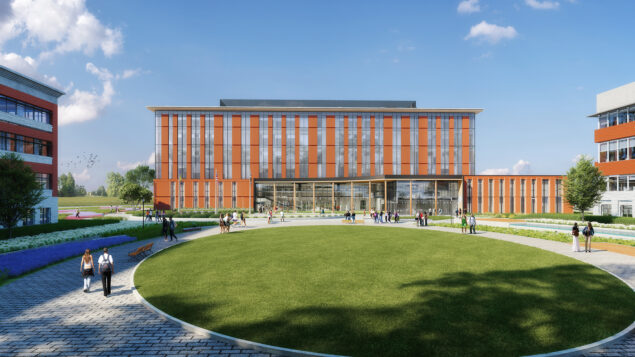Beto Alvarez’s career began in Colombia where he studied and worked for seven years as an architect. During the 1990s, Colombia was thrust into the international limelight because of the “War on Drugs” campaign. The setting was a rough place to raise his two young children, so Beto began looking for exit strategies for a better life for his family. Eventually, the construction and real estate bubble popped in Colombia in the late ‘90s. Banks collapsed when the country began nixing building projects funded by laundered money. Without a sustainable economy, architectural work naturally became scarce in the country, according to Beto. An opportunity to reinvent himself arrived when he acquired a student visa from Linn Benton Community College (LBCC) in Albany, Oregon.
He studied civil engineering technology for one year, and focused on drafting and engineering graphics for another year. Before receiving his associate degree, he worked as a designer for Mark R. Richards Engineering (MRR) in Eugene, Oregon (a firm that merged with DCI in 2012). At the same time, Beto taught architectural design at LBCC.
In 2014, Beto joined the Portland staff to work remotely for a special project. He was assigned to the Humboldt Bay Power Plant (HBPP) project, which involves the demolition of an underground nuclear power plant in Eureka, California. The nature of the work required Beto to relocate to Eureka so he could attend daily team meetings with Pacific Gas and Electric Company (PG&E), the general contractor Chicago Bridge and Iron Company (CB&I), and DCI’s client NW Demolition & Dismantling.
The three power plant units on the site were built during the 1950s and 1960s. Unit 3 was shut down in 1976 when PG&E made refueling and seismic upgrades. The company later determined further upgrades would not be economical to reopen Unit 3. PG&E announced in 1983 their plans to decommission Unit 3, but received approval to maintain the facility for nuclear fuel storage until actual decommissioning could begin. Decommissioning and demolition work for Unit 3 began in 2009. Unit 1 and 2 were shut down in 2010 and demolition is still in progress.

The execution of decommissioning Unit 3 is two-fold: planning the demolition and remediation. For more than a year, Beto has been the sole drafter during the planning stage for Unit 3. The work packages detail every instruction on how to perform the demolition in the safest way possible, Beto said.
“There is nothing like this project in the world,” he said. “There are basically two teams of engineers responsible for strategizing the demolition. Here the work culture is all about safety and the people are very proud of their safety record on this project. We have quarterly meetings just to discuss safety. That is something very particular about this job.”
Safety has been at the forefront of the project from the very beginning, and the team’s efforts have been recognized nationally for their efforts. The general contractor received the most prestigious safety award in the country: The National Safety Council’s Green Cross for Safety medal. Members of the current HBPP team were also awarded PG&E’s highest safety award for two years in a row – the Shermer L. Sibley Safety and Health Award.
Most of Beto’s drawings depict how material or building debris will be hauled away from the site; how equipment will be arranged or removed; or how the landscape must be modified to avoid interference from other demolition activities. Drawing updates require quick turnaround for the next iteration of process approvals.
Since his primary training was in architectural and structural drafting, Beto has expanded his civil drafting experience through this project.
“The civil drafting was a new thing for me,” he said. “I learned about contours, profiles and grading. It’s a new lexicon for me, and I had the chance to work with Civil 3D software. It has been a nice experience overall.”

Another unique factor about the Humboldt project is that the demolition team creates their own equipment for the job. One of their customized pieces of equipment is called the BG-50 cutter-soils mix (CSM) drill rig, which requires special assembly and operating conditions. The CSM technology is a deep shoring and water-cut-off wall that has never been employed at the scale or depth involved at HBPP. The wall measures 13 feet thick and up to 174 feet deep, and is intended to dewater and provide shoring for the future excavation of the contaminated caisson (nuclear fuel storage) beneath the reactor. He said many industry professionals from around the world have visited the Humboldt Bay Power Plant to learn about its safe demolition and to witness how the equipment operates on-site.
Rose Bechtold, Communications Specialist | Rose comes from a journalism and technical writing background. She is in her element while in research mode and naturally immerses herself in expert knowledge by interviewing staff members about new subjects. In her spare time, Rose practices plein-air sketching of buildings and random scenes around town.


